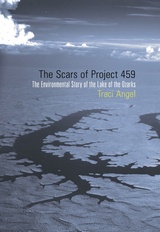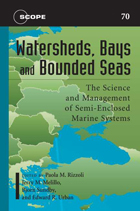3 books about Watersheds

Reconciliation in a Michigan Watershed
Restoring Ken-O-Sha
Gail Gunst Heffner
Michigan State University Press, 2024
Like many American urban waterways, Ken-O-Sha has been in decline for nearly two hundred years. Once life-supporting, the waterway now known as Plaster Creek is life-threatening. In this provocative book, scholars and environmentalists Gail Gunst Heffner and David P. Warners explore the watershed’s ecological, social, spiritual, and economic history to determine what caused the damage, and describe more recent efforts to repair it. Heffner and Warners provide insight into the concept of reconciliation ecology, as enacted through their group, Plaster Creek Stewards,who together with community partners refuse to accept the status quo of a contaminated creek unfit for children’s play, severely reduced biological diversity, and environmental injustices. Their work reveals that reconciliation ecology needs to focus not only on repairing damaged human–nature relationships, but also on the relationships between people groups, including Indigenous North Americans and the descendants of European colonizers.
[more]

The Scars of Project 459
The Environmental Story of the Lake of the Ozarks
Traci Angel
University of Arkansas Press, 2014
The Scars of Project 459 tells the environmental story of the Lake of the Ozarks, built by the Union Electric Company in 1931. At 55,000 acres, the lake was the biggest manmade lake in the United States at the time of its completion, and it remains the biggest in the Midwest, with 1,100 miles of shoreline in four different Missouri counties. Though created to generate hydroelectric power, not for development, the "Magic Dragon," as it is popularly known because of its serpentine shape, has become a major recreational area. Located in some of the most spectacular Ozark scenery, the giant lake today attracts three million visitors annually and has more than 70,000 homes along its shoreline. Traci Angel shows how the popularity of the Lake of the Ozarks has resulted in major present-day problems, including poor water quality, loss of habitat, and increasing concerns about aging waste-management systems for the homes surrounding the lake. Many in the area, especially business owners whose incomes depend on tourism, resist acknowledging these problems. The Scars of Project 459 aims to make public the challenges facing this important resource and ensure that its future is not to be loved to death.
[more]

Watersheds, Bays, and Bounded Seas
The Science and Management of Semi-Enclosed Marine Systems
Edited by Edward R. Urban, Jr., Bjørn Sundby, Paola Malanotte-Rizzoli, and Jerry M. Melilllo
Island Press, 2009
Some of the world’s most important bodies of water, from the Black Sea to the Bay of Bengal, are classified as “semi-enclosed marine systems” (SEMS). Separated from the open seas by a strait, island archipelago, or physical process, SEMS are particularly vulnerable to environmental damage and particularly difficult to fully understand and manage.
Watersheds, Bays, and Bounded Seas provides state-of-the-science information about these complex systems and identifies best management practices to preserve them. With contributions by natural and social scientists, the book examines both the political and biophysical forces affecting semi-enclosed marine systems.
SEMS comprise a substantial portion of the coasts—areas with high population density—and we rely on them for often-competing services such as navigation and transport, disposal of waste, provision of food, extraction of minerals, and leisure. The book describes how human activities could irrevocably alter these fragile ecosystems, exploring threats from runoff to climate change. It also addresses the unique challenges of managing SEMS, including cooperation between multiple nations.
Watersheds, Bays, and Bounded Seas provides state-of-the-science information about these complex systems and identifies best management practices to preserve them. With contributions by natural and social scientists, the book examines both the political and biophysical forces affecting semi-enclosed marine systems.
SEMS comprise a substantial portion of the coasts—areas with high population density—and we rely on them for often-competing services such as navigation and transport, disposal of waste, provision of food, extraction of minerals, and leisure. The book describes how human activities could irrevocably alter these fragile ecosystems, exploring threats from runoff to climate change. It also addresses the unique challenges of managing SEMS, including cooperation between multiple nations.
[more]
READERS
Browse our collection.
PUBLISHERS
See BiblioVault's publisher services.
STUDENT SERVICES
Files for college accessibility offices.
UChicago Accessibility Resources
home | accessibility | search | about | contact us
BiblioVault ® 2001 - 2024
The University of Chicago Press









